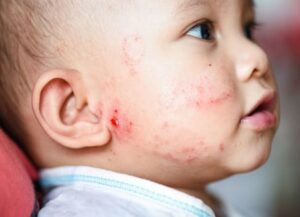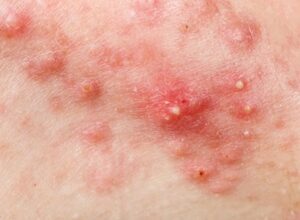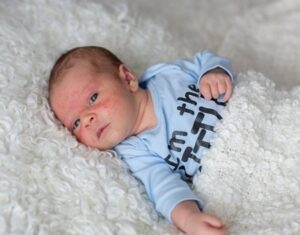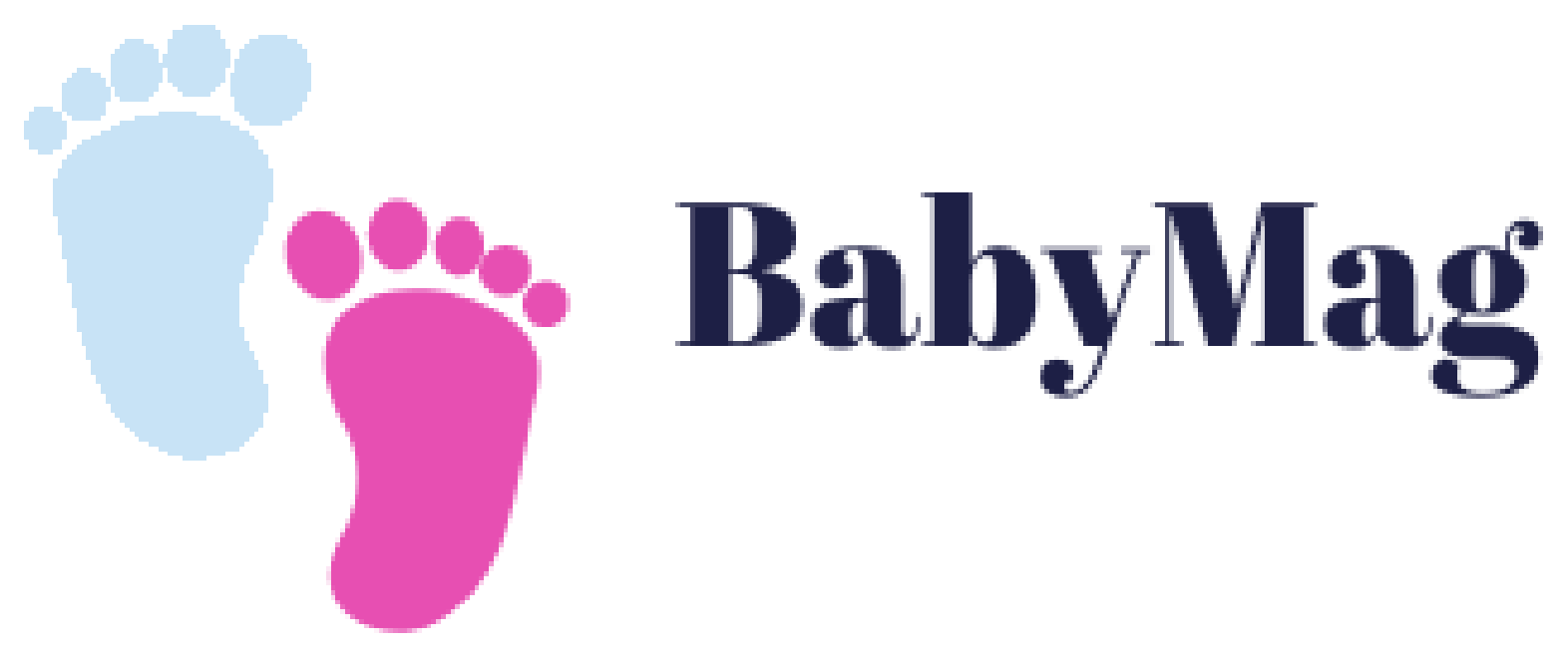 Is your baby’s acne worse than a high schooler’s? When she appears to be all set for her close-up momenthead rounding out correctly, eyes less puffy and squintybaby acne may strike. The appearance of pimples on a newborn’s face is rather typical, beginning at 2 to 3 weeks of age and affecting around 20 to 40 percent of all infants. Fortunately, it’s short-term and doesn’t affect your kid much. Here’s what you can do while we wait.
Is your baby’s acne worse than a high schooler’s? When she appears to be all set for her close-up momenthead rounding out correctly, eyes less puffy and squintybaby acne may strike. The appearance of pimples on a newborn’s face is rather typical, beginning at 2 to 3 weeks of age and affecting around 20 to 40 percent of all infants. Fortunately, it’s short-term and doesn’t affect your kid much. Here’s what you can do while we wait.
Table of Contents
Causes for Baby Acne
Regardless of whether you believe it or not, as with adolescent acne, hormones are typically the primary reason. However, while it’s true that newborns are plagued by pimples due to their own hormones, it’s not because they have too much testosterone; instead, it’s because of their moms’ hormones.
Acne breakouts on the chin, temples, and eyelids are all caused by the mother’s natural hormones. They stimulate sluggish oil-producing glands in the baby, causing acne on the chin, temple, eyelids, cheeks, and occasionally the head, neck, back, and top chest.
Baby Acne and Other Comparable Skin Problems
Eczema
Eczema appears as red bumps on the face. It can also appear on your child’s knees and elbows as they age. Dermatitis might become infected and develop a yellow crust or scaly appearance. It may worsen with time if your youngster crawls about and scrapes their knees and elbow joints. Your doctor can distinguish between child acne and dermatitis with relative ease. Atopic dermatitis is one of the most common forms of eczema.
Over-the-counter (OTC) treatments such as Aquaphor and Vanicream can be used to treat eczema. A mild medication may also be given if necessary.
You may be instructed to remove food irritants from your home and give your baby daily probiotics.
Cradle Cap
These tiny red pimples, also known as seborrheic dermatitis, are smaller than acne and can be accompanied by yellow flaky skin resembling scales. It typically appears on the head but may also affect the eyebrows and upper body.
Erythema Toxicum
Erythema toxicum is one more frequent skin condition that might be mistaken for a rash, tiny bumps, or red hickeys. It can be observed on your baby’s face, chest, or limbs within the first few days after birth. It isn’t harmful and usually subsides less than a week following delivery.
Infant Heat Rash
Small, wet, red pimples that look similar to acne can be found on infants’ foreheads, arms, legs, top chest, and diaper area when the weather is hot.
Milia
Milia are tiny white bumps that can appear on the faces of newborns. They develop when dead skin cells get trapped in tiny pores and may appear within a few weeks of birth.
Milia is not connected to newborn acne, and they do not require therapy.
Baby Diaper Rash
In case you’re wondering, the rash that results from dampness, irritants, and a lack of air (you guessed it!) resembles red, inflamed skin on a child’s baby diaper region.
Symptoms of Acne
 Acne in newborns can appear similar to what you experienced as a teenager, and your baby may have blocked pores, red papules, and even tiny pustules. In some infants, newborn acne appears like a harsh, scaly red rash.
Acne in newborns can appear similar to what you experienced as a teenager, and your baby may have blocked pores, red papules, and even tiny pustules. In some infants, newborn acne appears like a harsh, scaly red rash.
The most typical site for acne is on an infant’s face, particularly around the cheeks and nose. It can also appear on a newborn’s scalp, neck, chin, back, or breast. Acne may recur several weeks after it occurs and look worse when the baby is fussy or crying.
Acne in newborns appears during the first two weeks after birth, but it can occur any time before six weeks.
Treating Baby Acne
Because baby acne generally disappears on its own in a few months, no routine therapy is usually required. If your child’s acne persists for an extended period, their medical professional may prescribe a medicated lotion or other treatment.
Although these medications might be safe for adults, they are not recommended for children since the treatment can cause unwanted side effects. Don’t use over-the-counter medicines without first consulting with your child’s doctor. Many of these treatments may be harmful to a newborn’s fragile skin.
Reducing Risk of Baby Acne
While you wait for your infant’s acne to clear, there are things you can do to keep the skin as healthy as possible:
Maintain your Child’s Face Clean
Warm water should be used to wash your baby’s face daily. This is a lot of fun in the bathroom. You don’t need anything other than water, but if you want to use something, consider using a light soap or cleanser that doesn’t require washing. Don’t be afraid to inquire about it from your doctor.
Fragrance-free products are the most unlikely to irritate your baby’s skin.
Avoid Harsh Items
Retinoids, derived from vitamin A, and erythromycin, a medicine related to vitamin A, are frequently used for adult acne. These chemicals are not suggested for babies.
Don’t use scented soaps, bubble bathrooms, or other varieties of soaps that include excessive pollutants.
Do Not Use Lotions
It’s critical to remember that a baby’s skin is far more delicate than an adult’s. Lotions, ointments, and balms might irritate your youngster’s skin and worsen the acne.
Do Not Scrub
If the skin is scratched or brushed, it will be much more sensitive. Rather than repeatedly rubbing the face with a towel, gently pat it with a washcloth in circular motions.
Pat your child’s face using a towel after washing away the cleanser.
Do Not Pinch or Squeeze
Don’t pinch or squeeze the pimples. This will only worsen your youngster’s skin and might worsen the situation by introducing unwanted bacteria. The baby’s immune system is still immature to fight off bacteria.
Patience is Key
Acne in newborns is rarely harmful, and it’s not itchy or uncomfortable for your youngster. It must self-cure on its own right away.
When to Consult a Physician
 Acne that starts after 6 weeks is referred to as juvenile acne. This acne is most likely to start between three and six months.
Acne that starts after 6 weeks is referred to as juvenile acne. This acne is most likely to start between three and six months.
If your infant gets acne after six weeks of age, you should visit a board-certified dermatologist or a pediatric skin doctor. This may come in useful for a variety of reasons because:
Ensure it’s Acne
After 6 weeks of age, it’s pretty rare for acne to develop in a baby; therefore, you must be sure your kid has acne. Acne may be confused with a variety of other skin problems, and your baby might have an infection or dermatitis on their skin.
Rule Out Something Going on Inside your Child’s Body
Acne can be a medical condition symptom if it appears after six weeks of age. A skin test and, in some situations, a blood test or an x-ray are required to establish whether this is the case.
Discover if a Skin Care Product is Triggering Acne
Some babies acquire acne from a skin lotion or oil in items used on their skin.
Avoid Permanent Acne Marks
Baby acne, on the other hand, can result in long-lasting scars. Although baby acne seldom results in a scar, it can produce permanent scars. To avoid scarring, get expert help from a dermatologist.
While a dermatologist should examine a baby who gets acne after 6 weeks, this acne typically goes away on its own. The clearing process generally takes around 6 months to 1 year. Some youngsters, however, deal with acne for longer than that. Acne may develop into adulthood in some children.
Final Thoughts Baby Acne
Every case of newborn acne spontaneously cures within a few weeks without therapy. However, don’t let acne worry you; your lovely young one is gorgeous. Even though your new kid has a few pimples, enjoy these fleeting first months with them!

